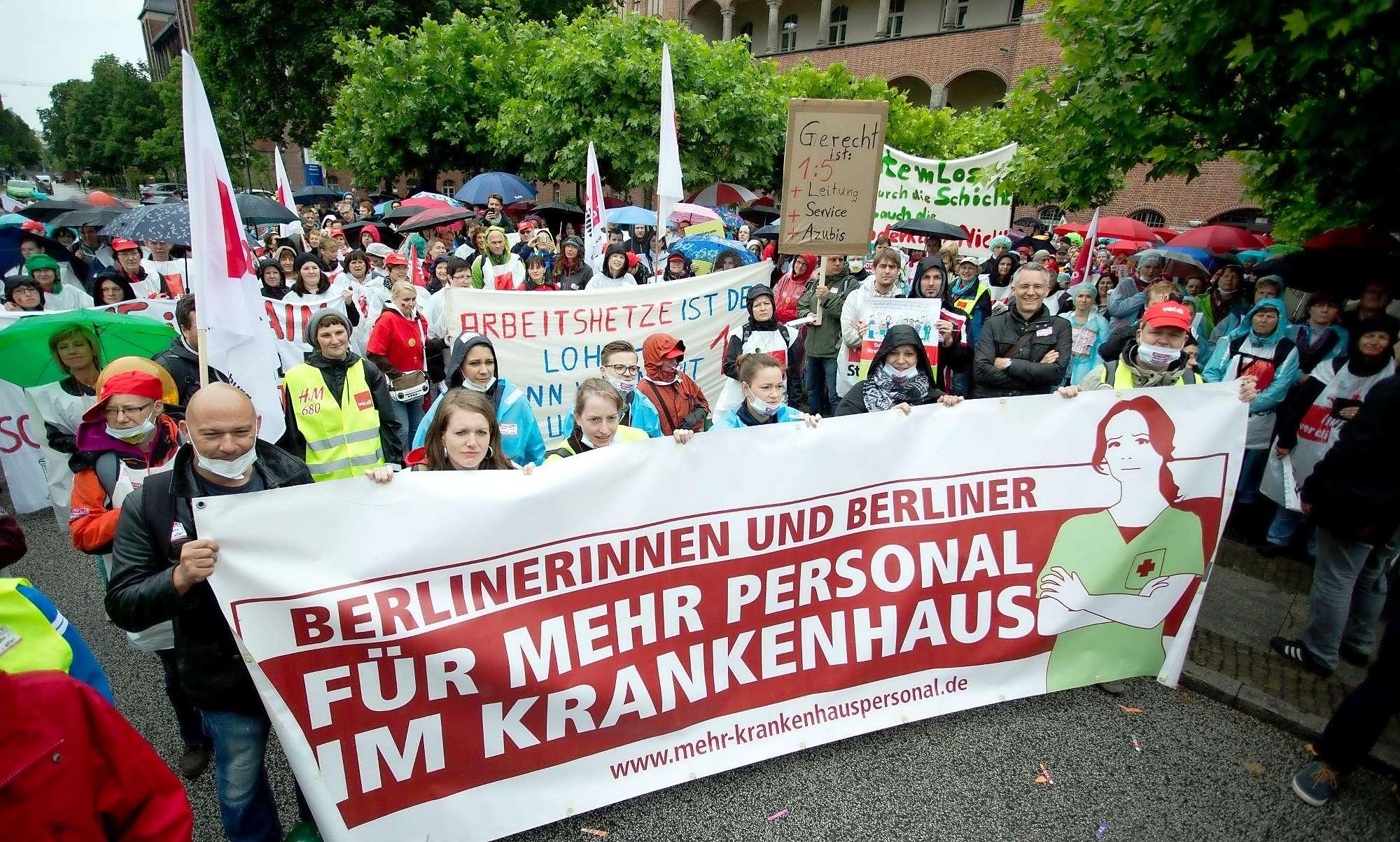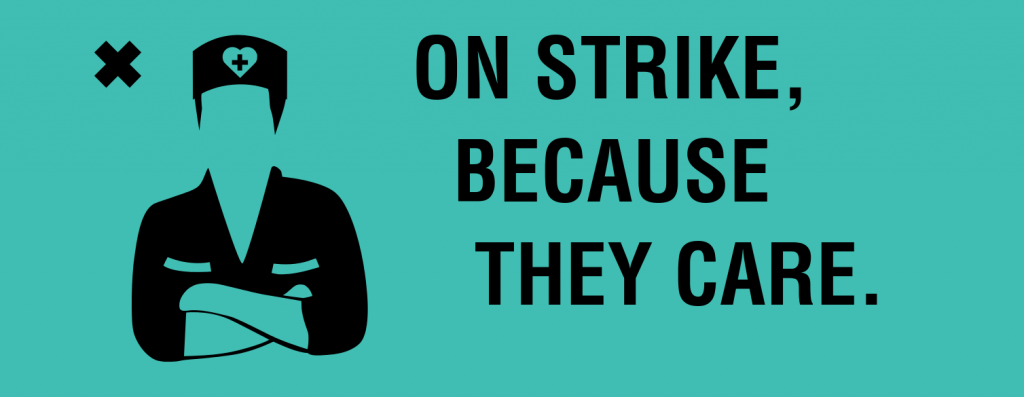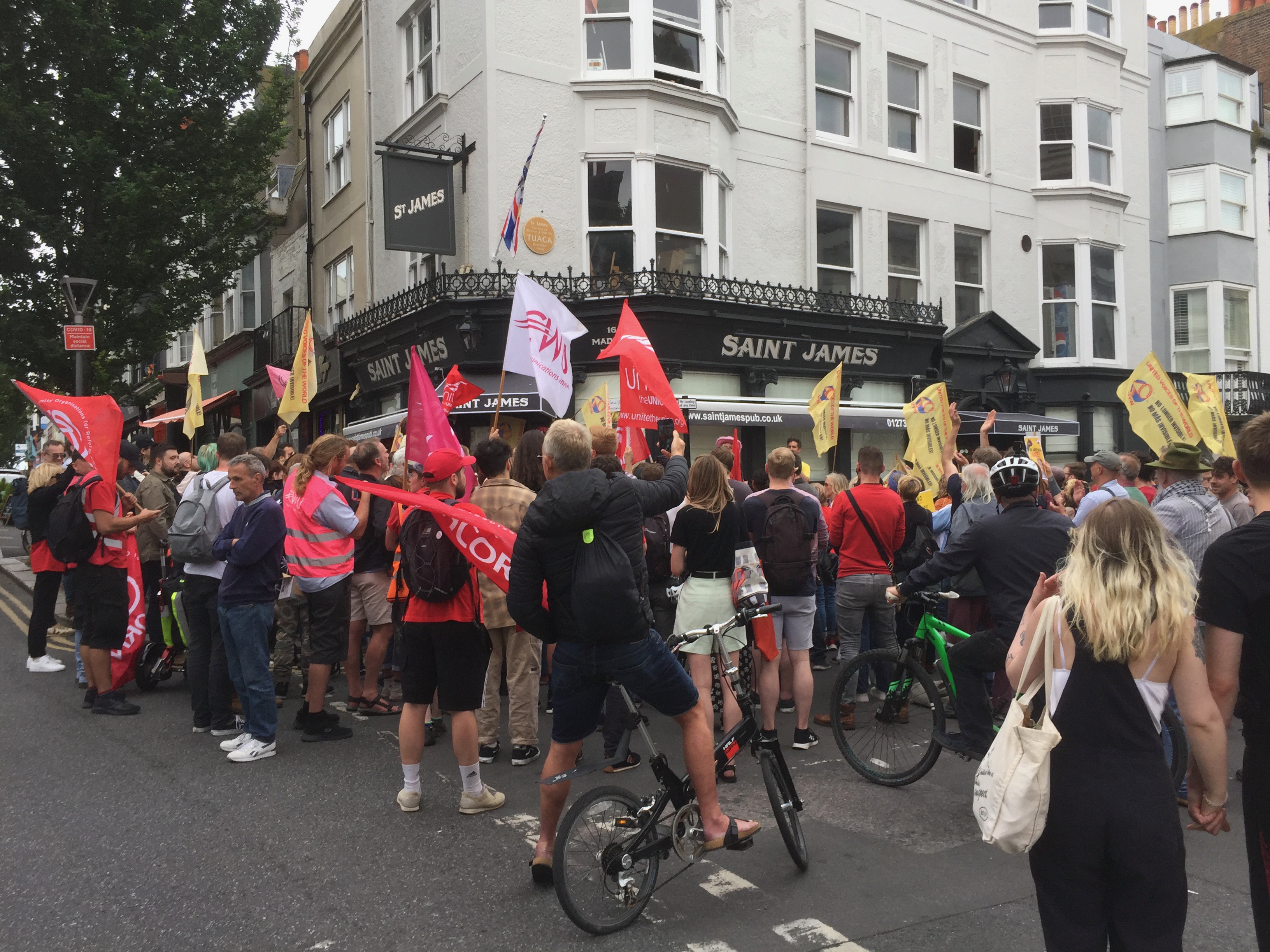‘More of us is better for everyone!’
The past year has seen a struggle in British healthcare unparalleled since the founding of the NHS, and after full walk outs by junior doctors, for better or worse, the BMA has reached some sort of a juncture in the strike. There is a need to discuss the direction of struggles in care and how to re-politicise and make relevant the idea of open access non marketised healthcare. As Plan C we have been part of the Picket Profiteers campaign highlighting the issue of privatisation and profiteering of the NHS, but it is important to also think about quality of care and tease out directly anti- capitalist trajectories in an industry where there is strong support for it’s use as a public good. For an idea of how a longer term strategy could be formed around the issue of healthcare Plan C Birmingham are excited to share this report from a relevant struggle about increasing the quality of care in hospitals in Berlin.
As healthcare working group of the interventionist left (iL), we participated in the labour struggle at the University Clinic Charité, in Berlin. This is a short summary of our experiences trying to develop a common practice out of a common perspective between patients and staff.
While the German health-care sector had long been organised in a mostly non-commercial way, privatisation, competition and a lack of investment characterise the past decade. In 2004 a new financing system was introduced for hospitals (DRGs = diagnosis related groups), which remunerates hospitals with a lump sum per case (i.e. diagnosis). This sets the incentive for hospitals to treat as many patients as possible with the least costs possible. As a result patient numbers have increased considerably, while nursing staff – one of the biggest cost factors – have been cut, implying a significant intensification of work. The result is worsening working conditions and a deterioration in the quality of care. These are what we identify as the everyday manifestations of the contradictions produced by the capitalisation of the hospital sector. For us these contradictions are the starting points for developing struggles.
In the normalisation of austerity and crisis, we experience difficulty in mobilising protest. What has been key at the Charité was the collectivisation and politicisation of the individualised experience of failure. Many nurses feel they are no longer able to care for their patients in a way that is satisfactory for either side. But often this is an experience of personal shortcoming, compensated by longer working hours or not taking breaks. The care sector is furthermore a special territory for working struggles as there is not only the relationship between the employer and the employed, but also that between the caregivers and caretakers. This social relationship adds a strong gendered dimension to this exploitation in the form of calls on the ‘caring nature’ of the (mostly) female nurses to ‘sacrifice themselves’ for their patients, while at the same time devaluing their work as superfluous care that is rationed and badly paid.
In response to these conditions of struggle, nurses in the trade union ver.di organised collective emergency calls whenever patient were put in danger due to the lack of sufficient staffing. This practice developed an understanding that it was not a personal problem, but the conditions of work that endangered patients (“If you really care about your patients, you go on strike!”). They further developed a form of strike that avoided a division between patients and staff: they restricted their right to strike by telling the employer one week in advance how many nurses would go on strike and how many beds or wards needed to be closed in order to guarantee patient safety. Through this method, the responsibility lay with the employer to cancel or delay those operations and treatments that were able to be scheduled or move them to a different hospital. In this way beds or whole wards were ‘barred’ in advance so that nurses would not ‘strike against patients’ but against empty beds.
The strike at the Charité was special in many ways but there are two distinct parts that allowed it to open up a perspective beyond the concrete achievement of their goals: the progressiveness of their demand and the declared intention and commitment to lead this not just as a labour, but as a social and political struggle.
For us the demand for a fixed patient-to-nurse ratio has great progressive potential because;
(i) it makes working conditions and the intensification of work part of labour struggles and fought its legitimacy not only against the bureaucrats of their own trade-union, but also through two courts where the lawsuit put forward by the Charité was dismissed.
(ii) it isn’t just a quantitative demand for more nurses, but a ratio between nurses and patients. Through this it not only improves the conditions of work at present, but introduces an instrument that also prevents future work intensifications.
(iii) it changes a system in which the budget determines the staffing, to a system in which the needs (i.e. the number of patients) determine the number of nursing staff.
The nurse-to-patient ratio thus proved an easy-to-understand and widely supported demand, which allowed us to explain and criticise the marketisation of the healthcare sector, while at the same time point to a utopia in which health-care is organised according to needs and not according to economic interests. In this way the demand opened up a common perspective for nurses and patients and the opportunity to fight for it in a broad social alliance. This alliance started in 2013 and invited parties, NGOs, activists, patients and other professions with the slogan “More of us is better for everyone”, uniting all these actors with a common goal. Our attempt was to develop a joint practice within this shared perspective.
In the first year, the alliance worked mainly as a support network that was called in by the trade union activists when there was news in the negotiations or support needed. We helped by doing telephone organising, going in tandems over the wards to mobilise people and by accompanying the struggle with publications, events and social media. However, we quickly realised that the solidarity practice of “your struggle is our struggle” didn’t work to involve many people. Meetings mainly had the purpose of spreading information and sharing tasks but didn’t give room for strategic discussions. Further, the rhythm of our meetings was much too dependent on the logic of the trade union negotiations; thus we were unable to develop any initiative or dynamic of our own within the alliance.
This is why we decided to try and change the alliance so that workers from other hospitals, medical students, patients and other people could organise and articulate their own interests as an active part of the struggle. This wasn’t just a structural question of having regular meetings and opening up and rotating the preparations of the meetings, but mainly one of practice. We had to take the struggle onto a political level to allow people who didn’t work at the Charité to become active and develop a speaking position of their own. So we started a political campaign to include a nurse-to-staff ratio into the legal requirements for hospitals to be funded by the public health insurance.
In spite of the fear that the working struggle and a campaign for a legal solution might delegitimise one another, the two levels of struggle actually worked out really well to support one another: during the strike the Charité tried to accuse the workers to act against their patients’ interests; in response, we were able to organise a ‘patient press conference’ in support of the strike, countering the employers intended division between the particular (i.e. the workers’) and the public interest. On the other hand, the media attention of the strike helped to make the political campaign more visible and bring the discussions about the marketisation of our healthcare sector and the need for a political change into the public discourse.
So to conclude, what did we achieve?
Firstly, the success at the Charité has been an important empowerment process for many and succeeded in bringing about a first contract that regulates minimum staffing requirements. The ratios depend on the severity of the patient impairment but reduce the average number of patients per nurse roughly from 5 to 2 on intensive wards and from 12 to 9 on normal wards. In addition the contract also establishes a new committee that ensures the implementation of these requirements.
Secondly, the success at the Charité improved the conditions of struggle for hospital staff not only there, but nationwide. The new form of strike, the enforcement of binding staff requirements, the massive public support and the increased confidence and organisational strength of the profession have created a wave of organisation and resistance in hospitals across the country. In April, many more hospitals went on strike in Berlin, Saarland and Hamburg to warm up for intensified strikes this summer/autumn.
Finally, we managed to create an alliance of workers, patients and political groups that continues to try and organise a political process within and around these developing struggles. The idea was and is to generalise from the particular by linking up different interests and perspectives. And while we all know this works well in theory, the past three years have allowed us to develop an idea of what it takes to also fill this rhetoric with a practice.






